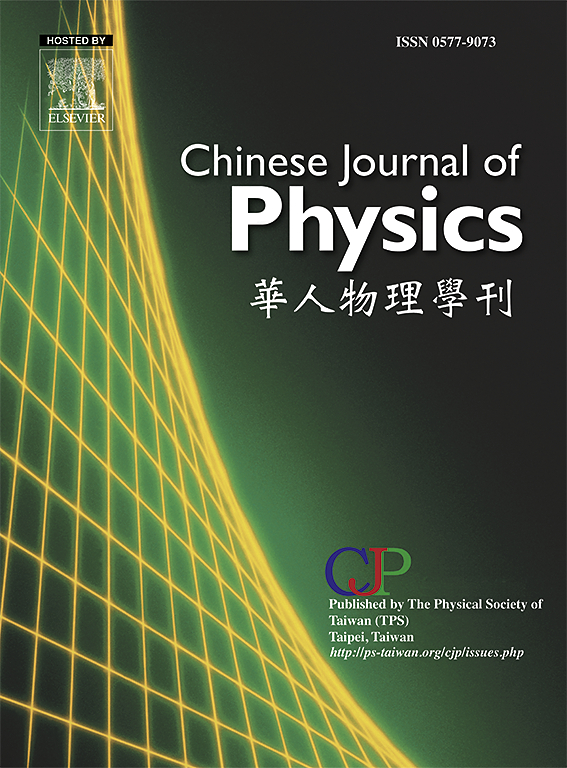Exploring Tsallis thermodynamics for boundary conformal field theories in gauge/gravity duality
IF 4.6
2区 物理与天体物理
Q1 PHYSICS, MULTIDISCIPLINARY
引用次数: 0
Abstract
Inspired by AdS/CFT interpretation Karch and Robinson (2015), we analyze thermodynamics for thermal boundary conformal field theories (CFT) that are dual to four-dimensional charged anti-de Sitter (AdS) black holes embedded in 11-dimensional M-theory-inspired models with space–time, employing the framework of Tsallis entropy. The latter is recognized as a nonadditive extension of the Boltzmann–Gibbs entropy that can satisfy the thermodynamic extensivity for black holes. Specifically, we consider AdS black holes in spacetime, interpreting the number of M2-branes as a thermodynamic variable. Using the Tsallis entropy enables us to highlight peculiar thermodynamic features, resorting to essential tools such as the chemical potential and Gibbs energy while examining phase transitions along iso-charge partitions. Then, we leveraged a class of geometrothermodynamic formalisms, including Weinhold, Ruppeiner, Quevedo I, and II metrics. Quevedo’s formulations provide richer information about phase transitions than the first two methods. Our study sheds new light on AdS black holes in a thermodynamically proper context, deepening our understanding of the role of non-extensivity in the critical behavior of such complex systems.
探索轨距/引力对偶性边界共形场论的查里斯热力学
受AdS/CFT诠释Karch和Robinson(2015)的启发,我们采用Tsallis熵框架,分析了嵌入AdS4×S7时空的11维M理论启发模型中与四维带电反德西特(AdS)黑洞对偶的热边界共形场论(CFT)的热力学。后者被认为是波兹曼-吉布斯熵的非加性扩展,可以满足黑洞的热力学扩展性。具体来说,我们考虑了 AdS4×S7 时空中的 AdS 黑洞,将 M2ranes 的数量解释为一个热力学变量。利用查里斯熵,我们可以突出奇特的热力学特征,借助化学势和吉布斯能等基本工具,同时研究等电荷分区的相变。然后,我们利用了一类几何热力学形式,包括 Weinhold、Ruppeiner、Quevedo I 和 II 度量。与前两种方法相比,Quevedo 公式提供了更丰富的相变信息。我们的研究从热力学的角度为 AdS 黑洞提供了新的视角,加深了我们对非扩展性在这类复杂系统临界行为中的作用的理解。
本文章由计算机程序翻译,如有差异,请以英文原文为准。
求助全文
约1分钟内获得全文
求助全文
来源期刊

Chinese Journal of Physics
物理-物理:综合
CiteScore
8.50
自引率
10.00%
发文量
361
审稿时长
44 days
期刊介绍:
The Chinese Journal of Physics publishes important advances in various branches in physics, including statistical and biophysical physics, condensed matter physics, atomic/molecular physics, optics, particle physics and nuclear physics.
The editors welcome manuscripts on:
-General Physics: Statistical and Quantum Mechanics, etc.-
Gravitation and Astrophysics-
Elementary Particles and Fields-
Nuclear Physics-
Atomic, Molecular, and Optical Physics-
Quantum Information and Quantum Computation-
Fluid Dynamics, Nonlinear Dynamics, Chaos, and Complex Networks-
Plasma and Beam Physics-
Condensed Matter: Structure, etc.-
Condensed Matter: Electronic Properties, etc.-
Polymer, Soft Matter, Biological, and Interdisciplinary Physics.
CJP publishes regular research papers, feature articles and review papers.
 求助内容:
求助内容: 应助结果提醒方式:
应助结果提醒方式:


